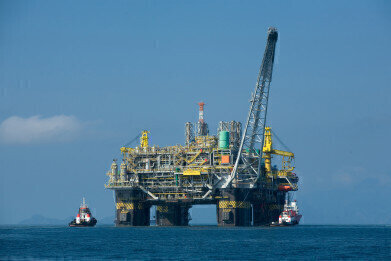Fuel for thought
How Do Oil Rigs Float?
Jul 04 2015
Picture a colossal mass of steel and iron floating in the open ocean. From all sides the structure is dripping with cranes, platforms and workers that all appear to be perfectly stable and at ease. Oil rigs are a true feat of innovation and never fail to make an impression. But how exactly so they float? Read on as we uncover what keeps these mammoth edifices above water level.
Simple physics
As with oil tankers, heavy load barges and cruise ships, deep sea oil rigs float according to basic physics. As the weight of the rig pushes downwards displaced water pushes upwards, thus keeping the structure afloat.
The basics
The official term for a buoyant oil rigs is a floating production system. The main types are classified as FPSO systems, which stands for floating production, storage and offloading. Floating production systems are generally utilised in water depths ranging from 600 to 6,000 feet. The structures feature large mono-hulls and are generally manufactured in the shape of a ship. All are equipped with processing facilities and are designed to stay in one place for an extended period of time. While some rigs are functional, others are used exclusively to store extracted oil and gas. These variants are simply called FSOs (which stands for floating storage and offloading systems) or FSUs (floating storage units).
Achieving optimum height
Oil rigs are designed by hugely talented engineers that equip them with a myriad of innovative features. Some deep water platforms are semi-submersible thanks to internal ballast and buoyancy chambers. These can be used to either raise or lower the platform to the desired height.
Keeping rigs in place
Staying afloat is one thing, but keeping rigs in place is an entirely different ball game. Some are hooked up to a stabilising anchor using wire rope, while others are dynamically positioned using high tech computer-coordinated thrusters. To keep rigs stable a series of propellers are also built into the structure.
Next generation advancements
So what’s next on the horizon for floating oil rigs? According to industry sources the world’s very first floating liquefied natural gas facility is currently in the final stages of development. This could bring a new era of efficiency and functionality to the LNG revolution.
While the floating oil rigs we see today are state-of-the-art there is always room for improvement. Over the next few years we can expect to see floating production systems improved, enhanced and economised.
For more information on this topic, read about what happens when an oil rig retires or how oil rig technology has improved.
Digital Edition
PIN 26.1 Feb/Mar 2025
March 2025
Analytical Instrumentation - Elemental Analysis for Quality and Process Control at Refineries, for Lubricants and Wear Metals in Engine Oils - Synthetic Lubricants: New Developments - Scaling...
View all digital editions
Events
Apr 27 2025 Portland, OR, USA
Apr 29 2025 Mumbai, India
Apr 29 2025 Edmonton, AB, Canada
May 05 2025 Houston, Tx, USA
May 06 2025 Nuremberg, Germany



















